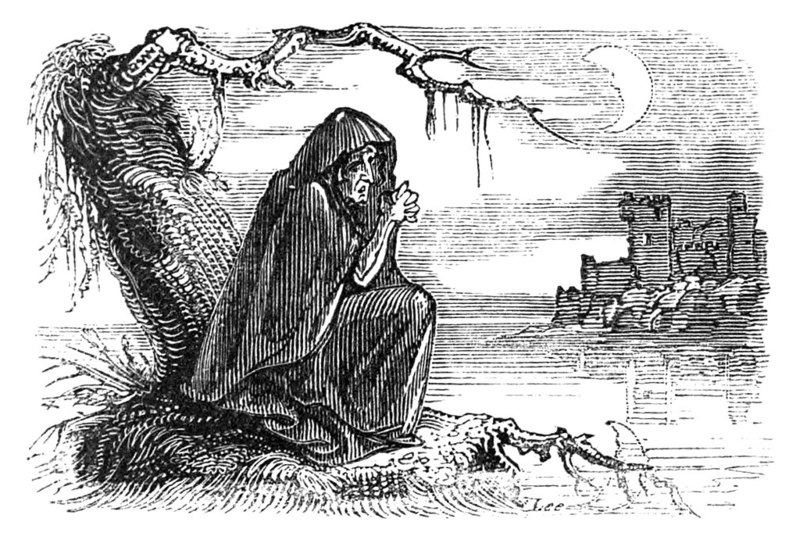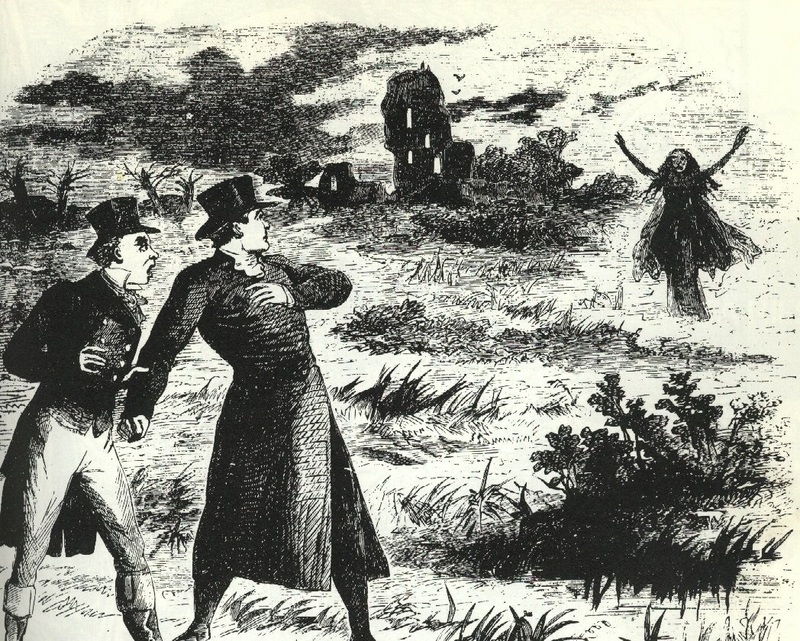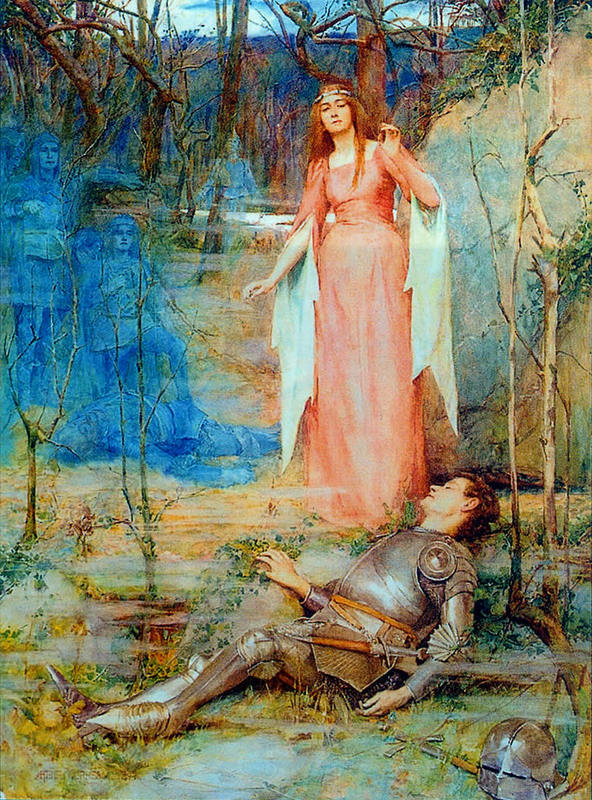The Banshee in Art
By comparing the banshee’s visual evolution throughout history, the viewer observes both the Anglicization and dilution of Irish mythology. The first image, taken from Thomas Crofton Croker’s Fairy Legends and Traditions of the South of Ireland, shows the banshee in one of her traditional forms. The second image, inked by an American illustrator, and entitled The Banshee Appears, focuses its perspective on the two men in the foreground and limits the banshee to the background. This removes the banshee’s agency and her role as a mourning woman, reducing her to a spectral smudge, barely there. This image, from 1862, reveals the Anglicization that occurs during this period and American perspectives that see traditional folklore as something fantastical and frightening. The final image, painted in watercolour from 1897 - 1901, reveals complete dissolution and disconnection from its Irish birth. The banshee, here, still surrounded by death, is now presented similarly to the death-bringer than one who warns of death to come. Still defined in relation to men, the banshee is now more of an avenging angel, leering over the dying man. The English painter reveals a further step in the dilution of Irish tradition and folklore entering the 20th century.


